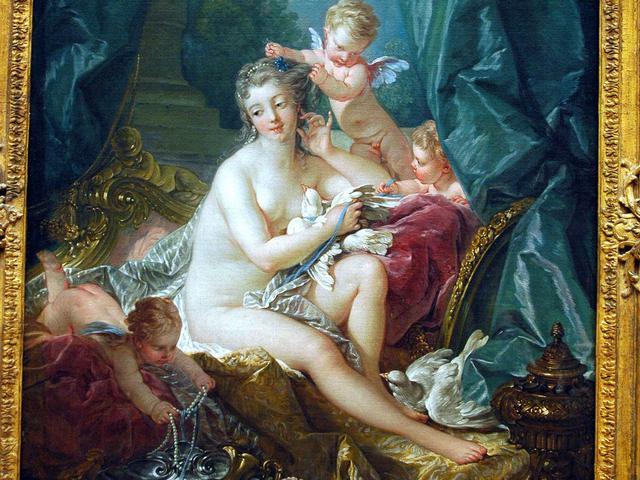The bath of Venus

This famous work was commissioned for the dressing room of Bellevue, his chateau near Paris. The bodies of the goddess and her cupids are soft, supple and blond. The rococo carved and gilt sofa, the silk, velvet and gilt damask curtains, are sufficiently heavy and elaborate for the Victorian era.
Boucher often resorted to the elegant and rather superficial themes typical of the Rococo style, of which he was an outstanding master. Venus appears repeatedly in his works, and there are several canvases like this one showing the goddess of beauty in her bath. Such themes allowed the artist to create one of those light and frivolous works for which he was so famous, its optimism and festivity enhanced by the combination of colors. This painting forms a pair with another canvas in the Hermitage, showing the triumph of Venus. Both works, as was common in the Rococo style, were intended to decorate an interior and form an integral part of an ensemble. For many years Boucher produced designs for elegant tapestries and this could not help but affect his painting style. This influence can be seen in the precise drawing, relative flatness, and ornamental exaggeration of details.
Francois Boucher (born September 29, 1703 in Paris, France; died May 30, 1770 in Paris), is one of the famous French painters, engravers and designers whose works are considered the perfect expression of French taste in Rococo. . period.
Trained by his father, a lace designer, Boucher won the Prix de Rome in 1723. He was influenced by the works of Giovanni Battista Tiepolo, Peter Paul Rubens and his teacher Francois Le Moyne. Boucher's first major commission was for engravings of 125 drawings by Antoine Watteau. After illustrating an edition of Molière's works, he drew caricatures of barnyard scenes and chinoiserie for the Beauvais tapestry factory.
© Tourblink